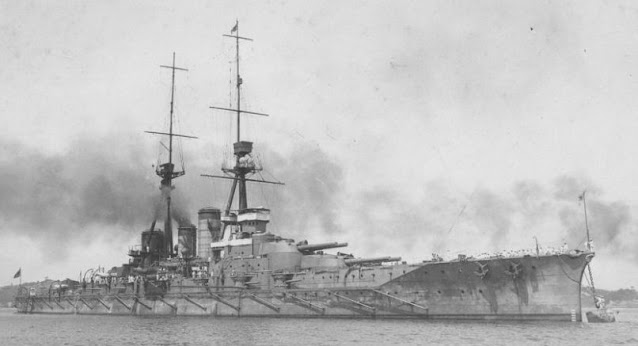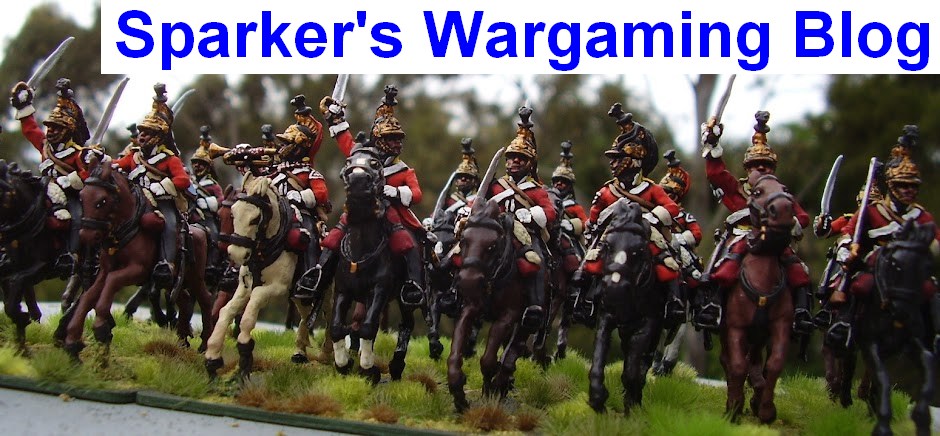 |
| The US Battlefleet returns to the Central Pacific for the 1932 offensive. |
Sometimes called The Naval Wars, or, popularly, the water wars, the Twenty Years War, 1920-1939, has its origins in the closing stages of the First World War. Field Marshal Hindenburg’s wisdom in capitalizing upon the success of the ‘Kaiserschlact Offensive’ to offer the war-weary Allies realistic peace terms ushered in a long period of economic growth and recovery. However, with equally matched powers in fierce competition over access to global markets and trade routes, a long period of fierce naval wars, fought between rival battle fleets, was inevitable.
 |
| The German Mackensen class were rebuilt as 'Fast Battleships' |
The German Empire itself was remodelled into a constitutional monarchy, albeit one with power concentrated into the hands of the Upper House’s agrarian elites. Of course, the Kaiser and Crown Prince both had to abdicate and go into exile in Holland. But the beautiful Empress Luisa’s charm and good works soon captivated the world’s press. The once proud German Army, hastily evacuated from occupied France and Belgium, was tasked by the Western Allies with supporting the White faction in the Russian civil war. German national pride now focused upon the bloodied but unbowed Imperial German Navy, trimmed to a modern fleet of the latest Super Dreadnought and third generation Battlecruisers.
 |
| The Grand Duchy of Siberia ordered several Lexington Class battlecruisers from the US. However delivery was sporadic as hostilities flared then dissipated! |
The ruins of Imperial Russia eventually divided along more or less permanent lines along the Ural Mountains. To the west the landlocked United Socialist States of Ukraine (USSU) became a pariah state, a military kleptocracy forever on the verge of famine. To the east the Grand Duchy of Siberia, with access to the Pacific Ocean and enjoying the vast mineral wealth of Siberia, prospered under the rule of the Oligarchic Council. Ironically, the Grand Duchy was forced to purchase key elements of its Pacific Fleet from its main potential rival, the United States!
 |
| USS New Mexico, Admiral Kimmel's Flagship at the Battle of the Yellow Sea, 1928 |
For their part, the United States of America, shocked by the human cost of its high-minded intervention in European affairs, hastily demobilized its army. It now focused its political and economic might into a series of unilateral free trade agreements with the major powers and on building up its naval might. Britannia could no longer be allowed to rule the waves! A powerful fleet of Fast Battleships was the way to keep future wars at arm’s length.
The Austro-Hungarian Empire did not survive the First World War intact, but in many ways, it benefitted from the splitting away of Hungary and the loss of its Italian possessions. The young Austrian Empire was indeed still an empire, for it retained significant possessions along the Adriatic coast. The western Allies knew better than to unlock the Balkan genie! Austria now looked to the sea and trade to regain its former wealth and grandeur, but in the meantime, it would make all sacrifices necessary to maintain its battle fleet.
 |
| The Regia Marina's Conte Di Cavour class after bombarding Marseilles, 1921 |
 |
| RM Andria Doria |
Italian statesmen also recoiled at the sacrifices of the bitter and protracted land war. From now on Italians would capitalize upon their dominant Mediterranean geography to gain their place amongst the foremost European Powers. Certainly, a fleet to rival that of the old enemy Austria must be maintained!
France was perhaps the only great power to continue to look to its army for security, despite the reduction of the German army. However, it was still a significant colonial power with colonies stretching across Africa and the Pacific, whose sea lanes of communication must be guarded, and the Italian naval awakening would have to be matched. Rather than maintain manpower intensive squadrons of cruisers, the decision was taken to concentrate naval expenditure on maintaining a single large battle squadron, capable of global deployment.
The British Empire recovered from the Great War remarkably quickly. The fast tracking of India’s independence, as a reward for the sacrifice of its troops in the war, relieved much of the colonial burden. India became a new and powerful member of the Commonwealth, even more supportive of free trade than its former master. Indeed, the British Commonwealth and its independent Dominions now formed the largest free trade bloc in the world.
 |
| Three of the four Admiral Class in the Atlantic 1922: Howe, Rodney and Anson. Hood is being refitted as a fast battleship. |
The Commonwealth was also allowed to trade on equal terms in Europe, France grudgingly admitting the debt of honour owed to the lost generations of British and Imperial youths who had split their blood for her freedom. Even German public opinion had been won over by the speed and efficiency with which British and US naval and military forces had acted to mitigate the horrors of blockade once the Armistice had been signed.
 |
| The Royal Sovereigns enforcing the blockade of San Francisco 1924 |
British politicians of both stripes, believing either in free trade, or public works, united in realized that maintaining and expanding a powerful and world class fleet would ensure full employment and open otherwise unwilling doors to free trade.
 |
| The Royal Navy enforces the 'Neutral Zone' around Spain, 1936 |
The first and second generation of Battleships and Battlecruisers would steadily be replaced with a rolling program of newer and larger super dreadnoughts, incorporating the hard lessons learnt at Jutland.
 |
| Kongo off Hawaii, 1939 |
The Japanese Empire had enjoyed a quiet but successful war, easily gobbling up German colonies throughout the central Pacific. Its naval power and technique, already world class, continued to grow. Japan was incensed at the peace terms which would require her return her new colonies to Germany, and contemptuous of pressure from all powers to moderate her demands in China.
 |
| Haruna, one of the ubiquitous Kongo class, prior to its refit as a 'Fast Battleship', Kobe 1921 |
It was the Pacific actions necessary to restore the status quo ante bellum with regard to the former German colonies which would see the opening shots of the Twenty Years War, however. An Alliance Fleet composed of both former allies and enemies was formed and ordered to enforce the provisions of the Armistice upon a hostile Imperial Japan.














Excellent stuff there and look forward to seeing what happens next:)!
ReplyDeleteThanks Steve - so am I!
DeleteWhat a great 'alternate history'! I do like the 'teaser' photographs, too. The Royal Sovereigns enforcing a blockade of San Francisco, 1924? Colour me intrigued!
ReplyDeleteCheers,
Ion
Thanks your Grace most kind!
DeleteWill you be gaming out the inevitable battles with some Broadside?
ReplyDeleteYes mate either with Broadside or Nimitz depending on how far into the period it is and how many ships are involved...
Delete